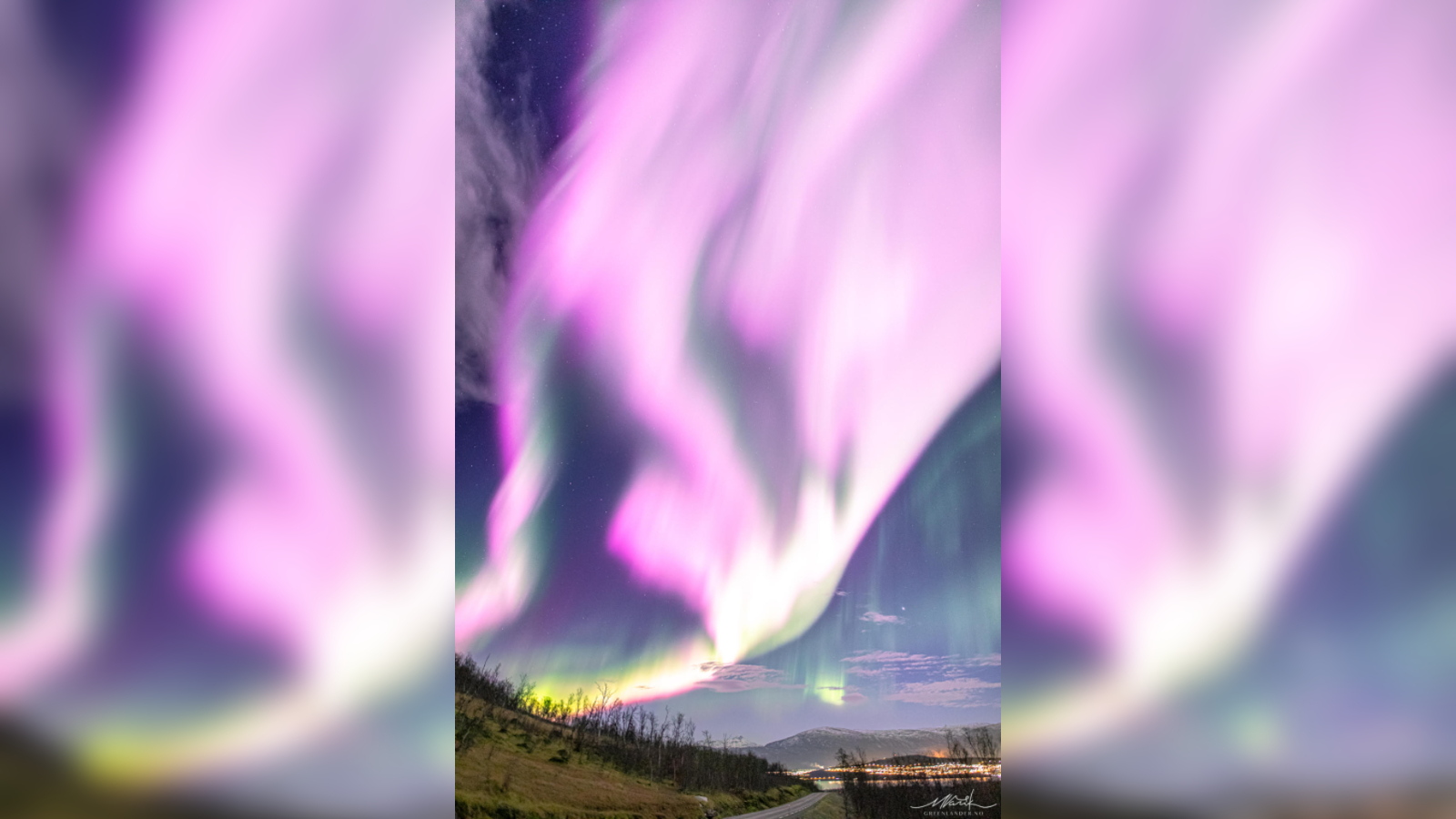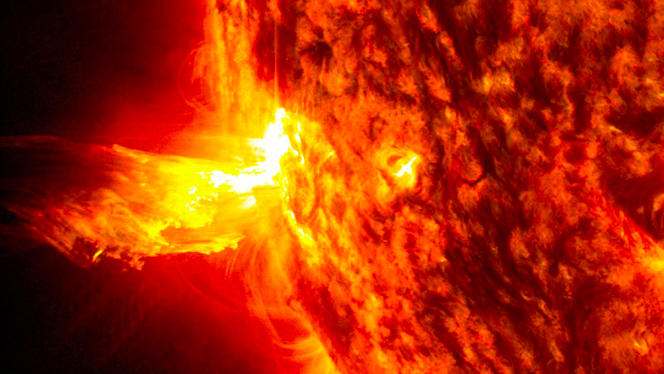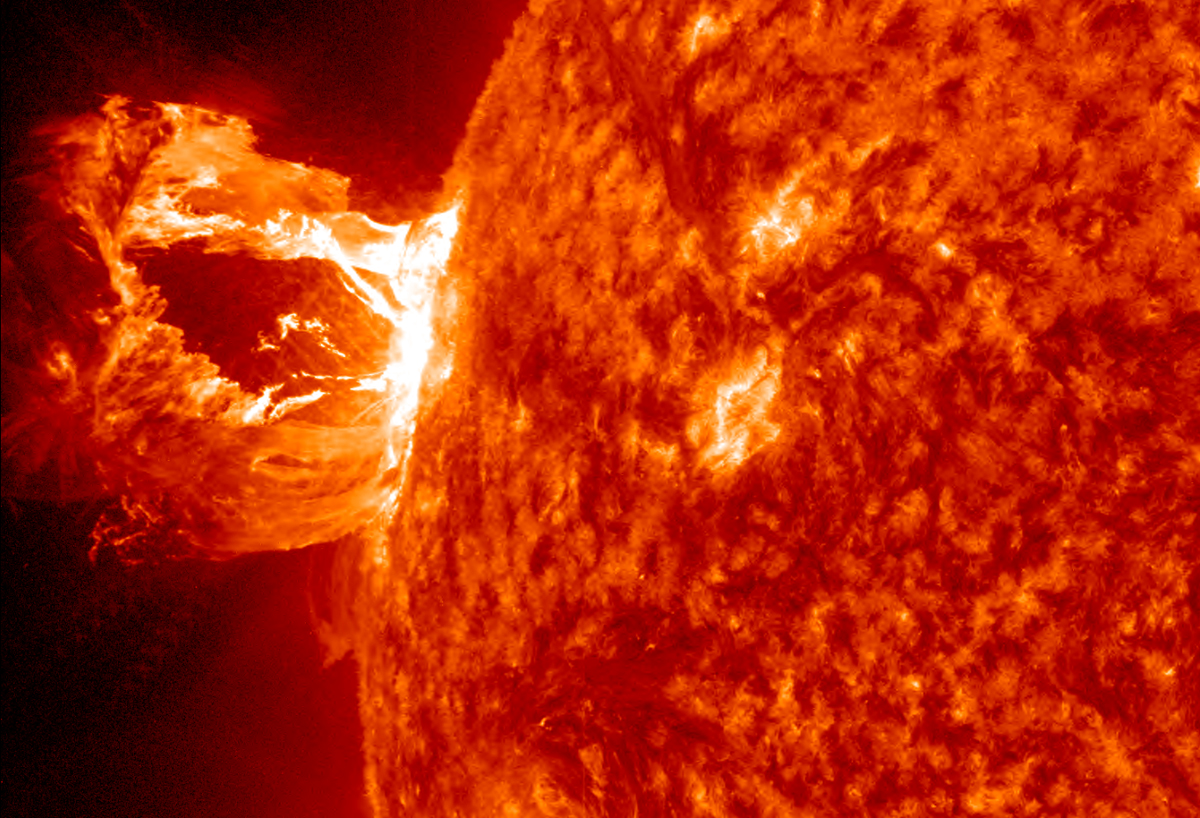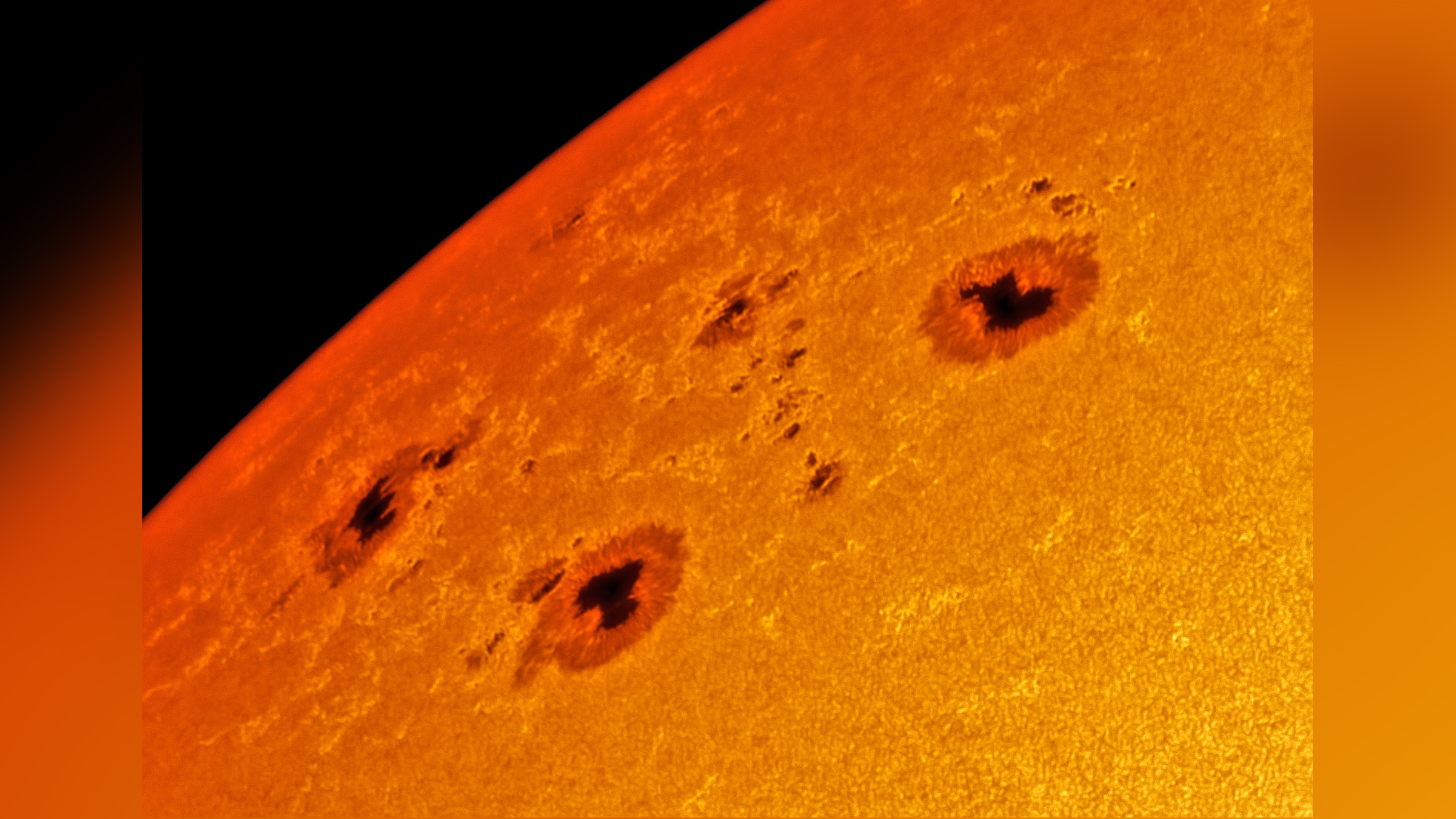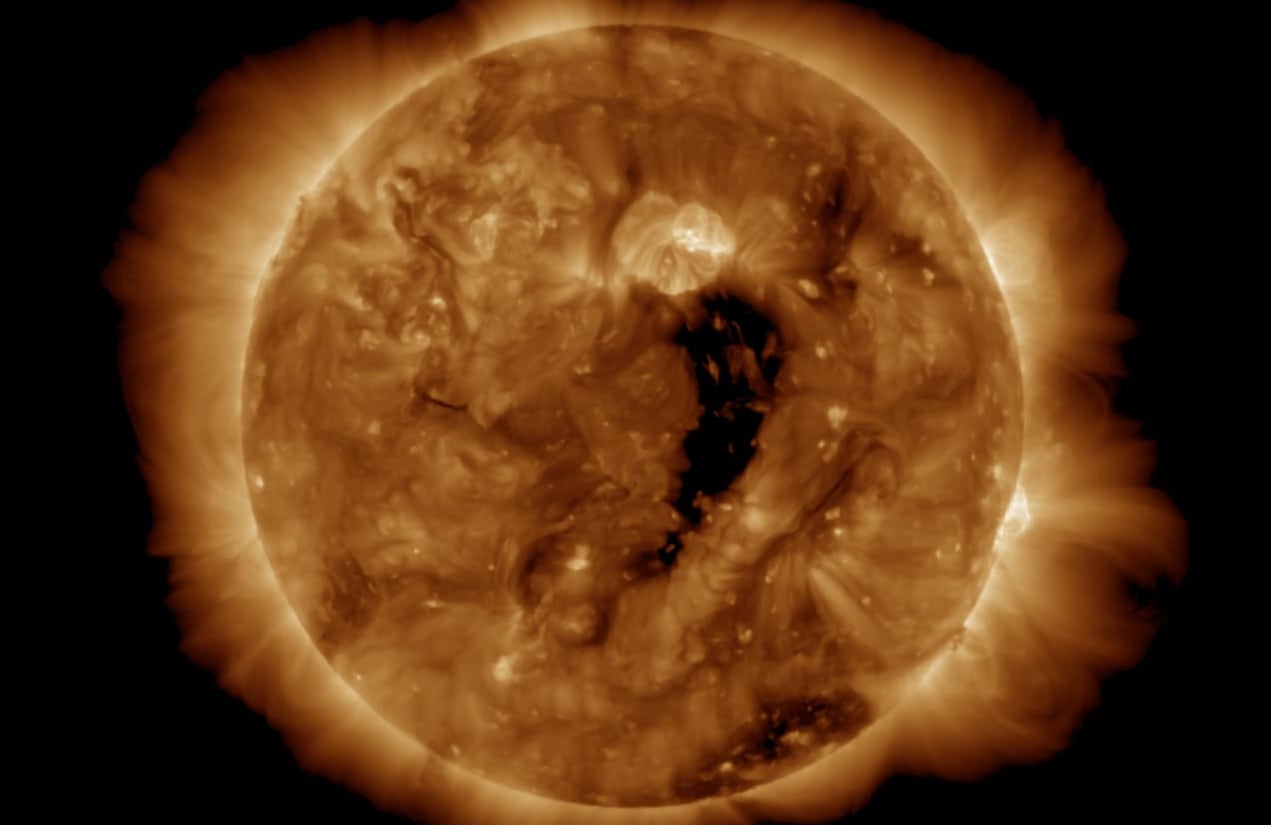10 solar storms that blew us away in 2022
Solar activity was on the rise this year, which meant an abundance of amazing solar storm-related stories. Here are our favorites.
Solar storms are becoming more frequent and powerful as the sun nears the peak of its 11-year solar activity cycle, which will occur in 2025. As a result, 2022 delivered an abundance of fascinating solar storm stories. From surprise storms and massive sunspots to vibrant aurora explosions and other weird phenomena, here are some of our favorites.
Surprise 'potentially disruptive' storm
Scientists were left scratching their heads after a "potentially disruptive" solar storm smashed into Earth without warning.
The storm was a G1-class event — meaning it was strong enough to create weak power grid fluctuations, cause minor impacts to satellite operation, disrupt the navigational abilities of some migrating animals and cause unusually strong auroras. Storms like these usually come from a coronal mass ejection (CME) — a burst of plasma with an embedded magnetic field that is belched out from a sun spot— but in this case researchers couldn't find any evidence of a CME occurring.
Instead, researchers think the storm originated from a much rarer co-rotating interaction region (CIR) of the sun. CIRs are "transition zones" between fast- and slow-moving zones of solar wind, which can cause buildups of plasma that eventually release in a CME-like event. The only difference is that no sunspot is formed on the sun's surface.
The unexpected solar storm coincided with the peak of an extremely rare five-planet alignment, where Mercury, Venus, Mars, Jupiter and Saturn lined up in the sky in order of their proximity to the sun (which hasn't happened since 1864).
Read more: Surprise solar storm with 'disruptive potential' slams into Earth
Explosion of pink auroras
An explosion of extremely rare pink auroras was seen in the night sky above Norway after a solar storm slammed into Earth and ripped a hole in the planet's magnetic field.
Get the world’s most fascinating discoveries delivered straight to your inbox.
The G1-class storm caused a small, temporary "crack" in the magnetosphere — an invisible magnetic field surrounding Earth that is generated by the planet's fluid metal core — that enabled charged solar particles to enter deeper into Earth's atmosphere than normal.
Normally, the storm particles react with oxygen atoms high up in the atmosphere, which gives off a bright-green hue. But in this unusual storm, the particles clashed with nitrogen atoms closer to the ground, which gave off stunning pink colors.
"These were the strongest pink auroras I have seen in more than a decade of leading tours," Markus Varik, who photographed the vibrant auroras, told Live Science. "It was a humbling experience."
Read more: Solar storm smashes hole in Earth's magnetosphere, triggering extremely rare pink auroras
Massive plasma plume
An astrophotographer captured this hauntingly beautiful image of a massive plume of plasma shooting out of the sun after a CME. The fiery filament was around 1 million miles (1.6 million kilometers) long.
The plasma was initially contained in a large loop connected to the sun's surface, known as a prominence, and then broke off and streamed into space at around 100,000 mph (161,000 km/h).
The photo is a false-color composite time-lapse image that stacked hundreds of thousands of images captured over a six-hour period.
The ethereal ejection was "the largest CME I've ever witnessed," photographer Andrew McCarthy said.
Read more: 1 million-mile-long plasma plume shoots out of the sun in stunning photo
Radio blackouts in Southern Hemisphere
A surprise solar flare caused a temporary radio blackout in parts of Australia and all of New Zealand.
The flare originated from a CME that was pointed away from Earth. But X-rays and ultraviolet radiation given off by the flare ionized atoms in our planet’s upper atmosphere, making it impossible to bounce high-frequency radio waves from them and creating a radio blackout. Anywhere on the planet that is facing the sun can experience radio blackouts from solar flares.
Blackouts are classified from R1 to R5 according to their severity. This flare caused a moderate R2 blackout. An R5 blackout has the capacity to disrupt half the planet for several hours.
Read more: Unexpected solar flare smashes into Earth, causing radio blackouts in Australia and New Zealand
Powerful 'proton aurora'
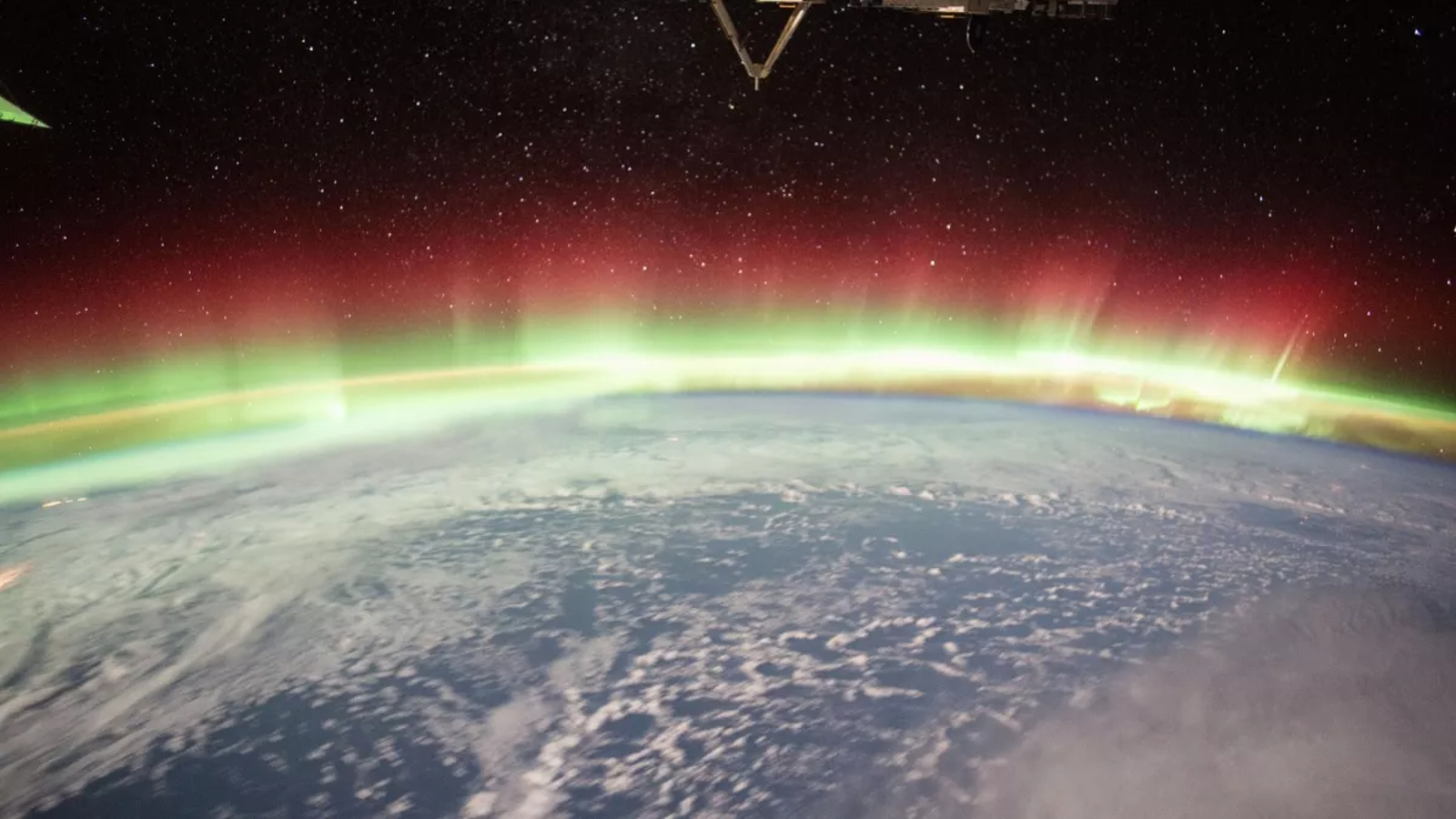
New research showed that, during a 2015 solar storm, an unusual type of aurora tore a 250-mile-wide (400 km) hole in the upper ozone layer.
These events, known as isolated proton auroras, occur when solar particles hit Earth's magnetosphere and travel down magnetic-field lines. The result is faint and patchy green auroras located farther from the poles than normal auroras.
These auroras create nitrogen oxides and hydrogen oxides, which react with ozone.
Luckily, during this storm, the auroras occurred in the mesosphere, the third layer of the atmosphere, rather than the stratosphere, the second layer of the atmosphere. This meant that the lowest part of the ozone layer remained intact and continued to provide an effective barrier against ultraviolet radiation.
Read more: Massive 'proton aurora' blasted a 250-mile-wide hole in Earth's ozone layer
One of the largest CMEs ever detected
Venus experienced a bout of extreme space weather after being battered by one of the largest CMEs ever detected. The CME, which was spotted by the European Space Agency's Solar Orbiter, was the second solar storm to hit Venus within a week but was at least an order of magnitude larger than the first.
The high-energy particles released by the storm caused issues with the Solar Orbiter, which persisted after the CME had passed. Mission scientists think Venus experienced a "very fast and powerful interplanetary shock" that caused its heliosphere to fill with the particles, causing prolonged interference for the spacecraft.
Read more: One of the largest solar storms ever detected just erupted on the far side of the sun
'STEVE' appearance
Another surprise solar storm triggered a rare cameo from a mysterious sky phenomenon known as STEVE.
STEVE (short for "strong thermal emission velocity enhancement") is a long, thin line of hot gas that has been superheated by a solar storm. It appears as an enormous ribbon of purplish light, which can hang in the sky for an hour or more, accompanied by a "picket fence" of green light that usually disappears within a few minutes.
STEVE is often misinterpreted as auroras and normally appears only after strong auroral displays during solar storms. However, it is not actually an aurora. Auroras occur when high-energy particles collide with gas molecules and heat them up, creating an instantaneous release of energy. But STEVE is caused by a prolonged increase in kinetic energy from auroras that heats up the surrounding gas.
Read more: 'STEVE' descends on North America after surprise solar storm
Back-to-back storms
A pair of geomagnetic storms slammed into Earth on back-to-back days after a moderate solar flare blasted out of the sun's atmosphere.
The first blast, caused by a G2-class storm, was followed by a smaller G1-class storm the following day. Authorities warned that the storms could cause radio blackouts and disrupt power grids at high latitudes, but both storms passed without causing any real disturbances.
Another G2 storm had grazed past Earth just a few days prior to the back-to-back storms. Researchers say this kind of repeated bombardment by small solar outbursts could become more common in the next few years as the sun ramps up toward the solar maximum.
Read more: 2 geomagnetic storms will lash Earth today, but don't worry (too much
Giant sunspot doubles up
A massive sunspot, roughly the same size as Earth, suddenly doubled in size over a 24-hour period earlier this year. The massive sunspot, called AR3038, grew to roughly 19,800 miles (31,900 km) in diameter.
Scientists warned that the gigantic black spot, which was located near the sun's equator, had the capacity to spit out several strong M-class flares — medium strength flares with capacity to cause large regional blackouts. But even though the sunspot was pointed at Earth for around a fortnight, our planet managed to avoid a direct hit.
Read more: Giant sunspot doubled in size in 24 hours, and it's pointing right at Earth
"Canyon-like" hole in the sun
An enormous, elongated hole in the sun's corona, or outer atmosphere, stretched vertically across the star's surface like a dark scar.
Coronal holes are areas in the sun's upper atmosphere where the star's plasma is less hot and dense than in other regions, which makes them appear black in contrast. In these regions, the sun's magnetic-field lines point outward into space instead of looping back in on themselves.
Experts warned that the hole could belch out solar material at up to 1.8 million mph (2.9 million km/h), but in the end Earth was not in the direct firing line of this outburst.
Read more: Solar storm from 'canyon-like' hole in the sun could hit Earth
Want to learn more about solar storms and their potential impact on our planet? This year, we answered some pressing mysteries about solar storms, including whether they can wipe out the internet, trigger tsunamis or even destroy the entire planet.

Harry is a U.K.-based senior staff writer at Live Science. He studied marine biology at the University of Exeter before training to become a journalist. He covers a wide range of topics including space exploration, planetary science, space weather, climate change, animal behavior and paleontology. His recent work on the solar maximum won "best space submission" at the 2024 Aerospace Media Awards and was shortlisted in the "top scoop" category at the NCTJ Awards for Excellence in 2023. He also writes Live Science's weekly Earth from space series.



